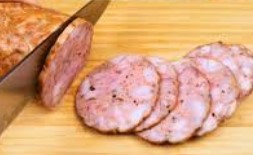Baking is a rewarding experience, transforming simple ingredients into delightful treats. But the difference between a perfect pastry and a baking blunder often lies in the details. Whether you’re a seasoned baker or just starting, mastering fundamental techniques and understanding key principles can elevate your creations to the next level. This guide provides essential baking tips to help you achieve baking success every time.
Accurate Measurements: The Foundation of Baking
Weighing vs. Measuring Cups
Precision is paramount in baking. While measuring cups are convenient, weighing ingredients, especially flour and sugar, offers greater accuracy.
- Weighing provides consistent results: Cup measurements can vary depending on how densely packed the ingredient is. A cup of flour can weigh anywhere from 4 to 5 ounces (113 to 142 grams) depending on how it’s scooped.
- Recommended tools: Invest in a digital kitchen scale for the most accurate measurements.
- Practical Tip: Tare your scale before adding ingredients to account for the weight of the container.
Measuring Spoons Matter
Even with small quantities, accuracy is vital. Use proper measuring spoons and level off ingredients.
- Dry Ingredients: Level off ingredients like baking powder and salt with a straight edge (like the back of a knife) to ensure correct ratios.
- Liquid Ingredients: Fill liquid measuring spoons to the brim, taking care not to spill.
- Example: Too much baking powder can lead to a bitter taste and an overly risen, then collapsed cake.
Ingredient Temperature: A Key to Success
Butter: Room Temperature vs. Cold
Butter temperature significantly impacts texture and consistency.
- Room Temperature Butter (about 65°F or 18°C): Essential for creaming, allowing it to incorporate air and create a light and fluffy texture. Softened butter should yield easily to pressure but not be melted.
- Cold Butter: Crucial for flaky pastries like pie crusts. Cold butter creates steam pockets, resulting in a tender, layered texture.
- Quick Tip: To quickly soften butter, cut it into small cubes and let it sit at room temperature for 15-20 minutes.
Eggs: Temperature Affects Emulsification
Like butter, egg temperature influences emulsification and batter consistency.
- Room Temperature Eggs: Emulsify more easily with other ingredients, creating a smoother batter and a more even bake.
- Practical Application: For optimal results, let eggs sit at room temperature for about 30 minutes before using them.
- Baking Fact: Room temperature eggs can increase the volume of a batter by up to 25%, resulting in a lighter, airier cake.
Mastering Mixing Techniques
Creaming Butter and Sugar
Proper creaming is fundamental for many cakes and cookies.
- The Goal: To incorporate air into the mixture, creating a light and fluffy base.
- The Method: Beat softened butter and sugar together until the mixture is pale and fluffy. This process can take 3-5 minutes with an electric mixer.
- Avoid Over-Creaming: Over-creaming can lead to a dense, tough cake.
Folding: Gentle Incorporation
Folding is a technique used to gently combine light ingredients, such as whipped egg whites or meringue, into a heavier batter.
- The Technique: Use a rubber spatula and gently cut down through the mixture, scoop underneath, and fold the lighter ingredient over the heavier one. Rotate the bowl slightly after each fold.
- Avoid Over-Mixing: Over-mixing will deflate the airy ingredient, resulting in a dense and flat bake.
The Gluten Factor: Understanding Flour Mixing
Gluten development affects the texture of baked goods.
- Cake Flour: Has a lower protein content, resulting in a tender crumb. Use for cakes, muffins, and other delicate baked goods.
- All-Purpose Flour: Versatile but can lead to a tougher texture if over-mixed.
- Bread Flour: Has a high protein content, ideal for breads and pastries where structure is important.
- Tip: Don’t over-mix your batter; mix until just combined.
Oven Mastery: Temperature and Placement
Calibrating Your Oven
Oven temperature is crucial for consistent baking.
- Oven Thermometer: Invest in an oven thermometer to verify your oven’s accuracy. Many ovens are off by 25-50 degrees Fahrenheit.
- Adjust Accordingly: Adjust your oven temperature based on the thermometer reading.
Proper Rack Placement
Rack placement affects heat distribution and browning.
- General Rule: Place your baked goods in the center of the oven for even heat distribution.
- Specific Cases:
Pies: Bottom rack for a crisp crust.
Cookies: Middle rack for even browning.
* Multiple Trays: Stagger the placement of trays for even air circulation.
Avoiding Oven Door Peeking
Resist the urge to constantly open the oven door.
- Heat Loss: Opening the door can drop the oven temperature significantly, affecting baking time and results.
- Visual Cues: Rely on visual cues, such as color and internal temperature (using a thermometer), to determine doneness.
- Baking Time Impact: Each time you open the oven door, you can add several minutes to the baking time.
Cooling and Storage
Proper Cooling Techniques
Cooling is a crucial step, especially for cakes.
- Cakes: Let cakes cool in their pans for 10-15 minutes before inverting them onto a wire rack to cool completely. This prevents sticking and allows the cake to set.
- Cookies: Transfer cookies to a wire rack immediately after baking to prevent them from continuing to cook on the hot baking sheet.
- Bread: Cooling bread on a wire rack allows air to circulate, preventing a soggy bottom.
Storage Solutions
Proper storage preserves freshness and flavor.
- Cakes: Store cakes in an airtight container at room temperature for up to 3 days or in the refrigerator for up to a week.
- Cookies: Store cookies in an airtight container at room temperature for up to a week.
- Bread: Store bread in a bread box or an airtight bag at room temperature for up to 3 days. You can also freeze bread for longer storage.
Conclusion
Mastering the art of baking involves understanding fundamental principles and techniques. From accurate measurements and ingredient temperatures to proper mixing and oven techniques, each step plays a crucial role in the final result. By following these baking tips, you’ll be well on your way to creating delicious and impressive baked goods that will impress friends and family. Happy baking!




